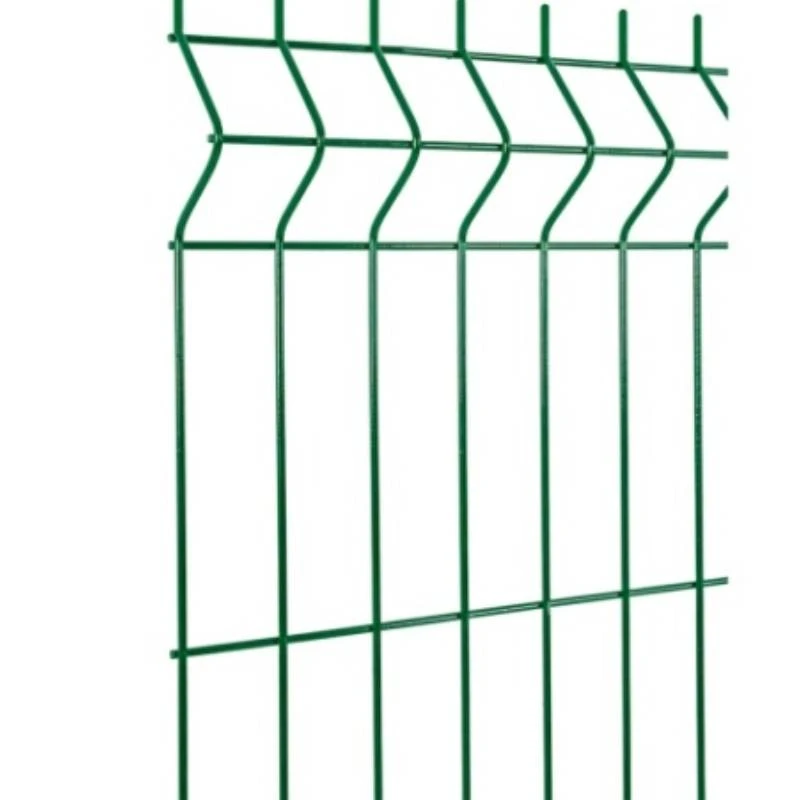-
Email:zhao@hyliec.cn
-
Tel:+86 311 85273988
-
WhatsAPP:8613931128750
3D Panel Fence – Durable, Secure, Easy-Install Mesh System
What I’m Seeing in the 3D Welded Mesh Market (and Why It Matters)
If you’ve been shopping for a 3d panel fence lately, you’ve probably noticed two things: they’re everywhere, and the specs vary wildly. To be honest, that split is the entire story—form meets function, but the details decide whether it lasts 3 years or 15. I’ve walked yards where panels looked great from a distance yet failed adhesion tests up close; I’ve also seen budget installs that surprised even the skeptical site manager.

What it is (and why people pick it)
A 3d panel fence uses welded wire mesh with pressed V-bends for rigidity. It’s popular because it’s clean-looking, economical, and quick to install. Schools, logistics parks, sports grounds, villas—many say it “just blends in” without feeling flimsy. In fact, buyers often choose it over chain-link for the modern silhouette alone.
Materials, methods, and real-world durability
Panels are typically low-carbon steel wire (Q195/Q235), welded at every intersection, then hot-dip galvanized or zinc-aluminum coated, and finally polyester powder coated. Better lines pre-treat with phosphating and chromate-free passivation. Testing I look for: salt spray (ASTM B117) ≈ 500–1000 h, adhesion (ASTM D3359), coating thickness ≈ 60–100 μm, and zinc layer ≈ 275 g/m² (ISO 1461). Service life? Around 10–20 years depending on coastal proximity and maintenance.

Product snapshot (specs most buyers ask for)
| Parameter | Typical Range | Notes |
|---|---|---|
| Panel height | 1.03–2.43 m | Custom heights available |
| Panel width | 2.0–3.0 m | 3.0 m reduces posts |
| Wire diameter | 4.0–5.0 mm | Heavier wire = stiffer panel |
| Mesh aperture | 50×200 mm ≈ standard | Anti-climb options |
| Coating | HDG + powder (60–100 μm) | RAL 6005/7016 popular |
| Posts | 60×60 or 80×60 mm | With clamps/caps |
Where it’s used (and why it works)
- Education campuses and sports fields—clean lines, safe apertures.
- Distribution centers and ports—fast install, good visibility for CCTV.
- Residential perimeters—doesn’t scream “industrial.”
- Utilities and substations—with razor or barbed add-ons if needed.
Process flow (how reliable vendors actually build it)
Wire drawing → straightening → automatic welding (EN 10223 guidance) → panel flattening → V-bend pressing → galvanizing or Zn-Al → pretreatment (degrease, rinse, phosphate) → powder coating (EN 13438) → curing → inspection (adhesion, thickness, salt spray) → packing. Most serious producers run ISO 9001 systems; a few add CE where applicable.

Vendor snapshot (my quick comparison notes)
| Vendor | Coating system | Lead time | Certs | Notes |
|---|---|---|---|---|
| China Tier-1 | HDG + 80–100 μm powder | 15–28 days | ISO 9001, CE (on request) | Strong QA, fair pricing |
| EU Specialist | Zn-Al + premium powder | 3–6 weeks | EN 13438, ISO 1461 | Higher cost, quick aftersales |
| Budget Exporter | Electro-galv + thin coat | 12–20 days | Basic | Watch for rust at welds |
Customization that actually helps
Choose wire 4.5–5.0 mm for high-traffic sites, anti-lift brackets, security toppings, and RAL 7016 if you want the “architect-approved” look. For coastal jobs, push for HDG to ISO 1461 and powder to EN 13438—real-world use may vary, but the delta shows up after the second winter.
Two quick case notes
- Municipal park retrofit: swapped chain-link for 3d panel fence, vandalism down (site manager’s words), sightlines improved; still clean after 18 months, inland climate.
- E-commerce DC: 2.4 m 3d panel fence with 80×60 posts, RAL 6005; install ran 12% faster than spec due to wider panels and clamp kit.
Customer feedback (what people actually say)
“Looks premium for the price.” “Gates matched perfectly.” A few note that cheaper powder chips near clamps; tightening torque and touch-up pens help, but better coating helps more.
Origin: China. Compliance references often include ISO 1461 (galvanizing), EN 10244-2 (wire), EN 13438 (powder on galvanized steel), ASTM B117 (salt spray), and ISO 9001 QA.
Authoritative citations
- ISO 1461: Hot dip galvanized coatings — Specifications and test methods.
- ASTM B117: Standard Practice for Operating Salt Spray (Fog) Apparatus.
- EN 13438: Coatings on galvanized steel products for construction.
- EN 10244-2: Steel wire and wire products — Non-ferrous metallic coatings.
- ASTM D3359: Standard Test Methods for Adhesion by Tape Test.
- ISO 9001: Quality management systems — Requirements.
-
Pro-Grade Tools for Fence: Durable, Efficient, Easy Install
NewsNov.17,2025
-
Ornamental Wrought Iron Fence Panels - Durable & Custom
NewsNov.17,2025
-
Field Fence for Sale – Galvanized Wire, Heavy-Duty Rolls
NewsNov.17,2025
-
Durable Garden Trelis | Weatherproof, Easy Install, Metal
NewsNov.17,2025
-
3d panel fence | rigid, anti-rust, quick-install security
NewsNov.17,2025
-
Trace Post Tracking — Real-Time Multi‑Carrier Parcel Updates
NewsNov.10,2025
